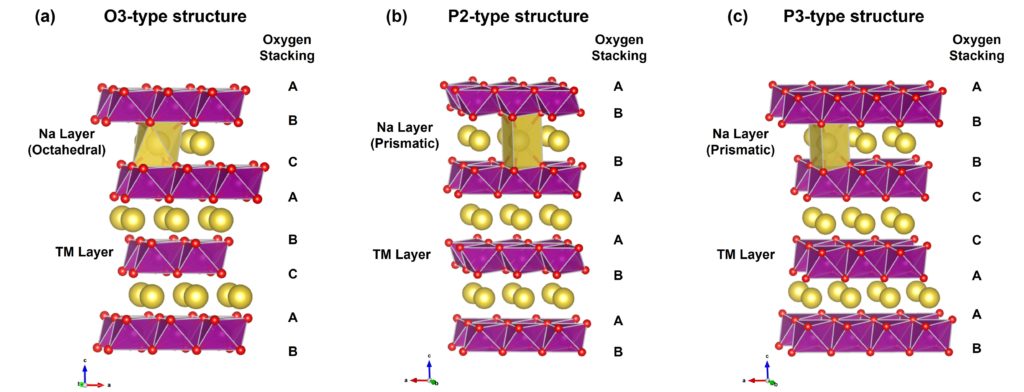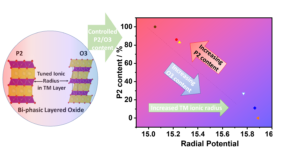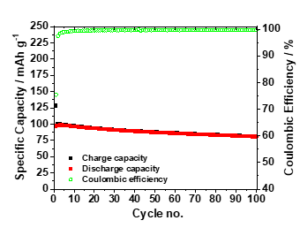Sodium Layered Oxides
Sodium layered transition metal oxides, (NaxTMyO2, TM = transition metal) represent a promising family of positive electrode materials for NIBs. As analogues to the common commercial LIB positive electrodes such as LiCoO2, NMC and MCA, they have been intensively studied for NIBs with the hope that much of the knowledge gained via LIB development can be directly applied here to accelerate NIB development. However, due to the larger ionic radius of Na+ compared to Li+, they have a much richer structural chemistry compared to their Li counterparts. They can adopt multiple polymorphs which include O3, P2 and P3, based on the coordination environment of the Na+ ions and the number of TMO2 slabs in the unit cell, while the Li equivalents typically only form the O3 structure. Therefore, intensive work is underway to understand the electrochemical behaviour of each polymorph in the Na oxides, each of which displays different performance characteristics when used in NIBs, to allow optimal matching of performance parameters (energy, rate, lifetime) to the desired application.
P2-type oxides generally show promising high-rate and cycling performance, but low Na content (x < 0.7) limits the full cell energy density. O3-type materials show high initial Na content (0.8 < x < 1) but suffer from poor rate capability and cycling stability. The P3 phase, which was originally reported to form for lower Na contents, is less studied. Recent work has shown that Na contents approaching those of O3 are possible whilst delivering good rate performance. In this work, by forming composites of the different polymorphs, we combine high initial Na contents with P2-type cycling behaviour by tuning the synthesis conditions.

Low-Cost Sodium-Based Cathodes
Whilst there has been great progress in recent years in the development of high energy density positive electrodes for sodium-ion batteries, most commercial or near-commercial materials contain high quantities of elements such as Ni, Co, and Li. These elements are associated with multiple disadvantages such as high toxicity, cost and uneven supply issues, in particular due to rapidly increasing demand from the growth of lithium-ion batteries. Therefore, there is an urgent need to develop low-cost materials based on non-toxic, cheap and abundant elements such as Mn, Fe and Cu. Such materials currently suffer from performance issues such as low capacity (Fe, Cu), low voltage (Mn) or poor cycling stability (Mn, Fe). A key focus of our group is to develop a fundamental understanding of the structure-property-performance relationships in these materials by careful characterisation of the material structure and sodium storage mechanisms, using a combination of diffraction, microscopic and spectroscopic techniques, to enable the rational design of novel materials which overcome the current performance limitations. This is achieved by a combination of strategies including careful selection of chemical composition, crystal structure design and morphological control.
Representative Publications:

